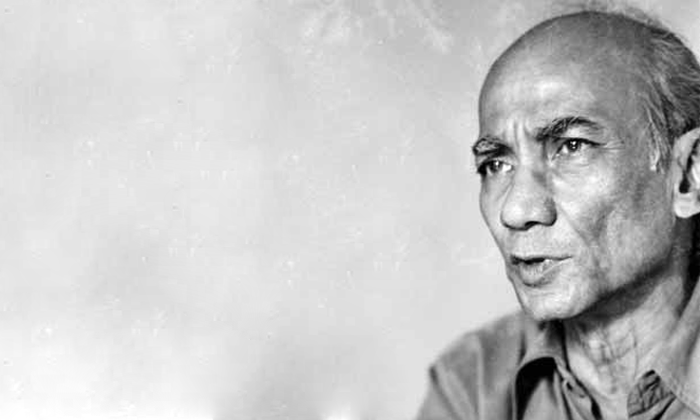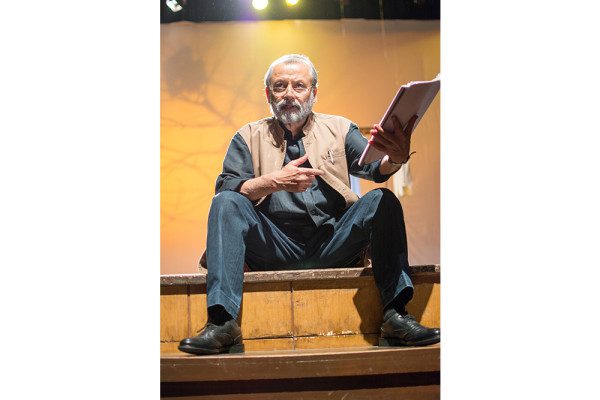Interactivity as a recent phenomenon in art practices includes the audience in its performance. It somehow dissolves the fourth wall and thus is more communicative, writes Samudra Kajal Saikia.
Interactivity has come up as a major apparatus for contemporary art practices in recent years. As the term interactive or interactivity could be understood in different ways, the enforcing factors behind the developing interest in interactive artistic practice also could be examined in multiple streams. The most prominent cause behind it is definitely the developments in the media technology. In fact interactivity is a much used technical term in computer science. By definition, it stands for allowing or relating to a continuous two-way transfer of information between a user and the central point of a communication system, such as a computer or television.
It is true that with the increasing use of electronic technology in the form of projections, videos and other devices into art practice, the term interactivity started appearing frequently with art. But there is another important cause which is more ideological or conceptual.
The growing concerns around spectatorship and privileging the act of perceiving art over the act of making art remains a major driving force for the growth of interactive art. The recent artistic discourse and praxis destroyed many traditional notions around art as object making or as a representational practice. Instead of the thing-ness of art, the conceptual content got more attention. As a result, artists came out of the studios looking for new environments to work. From mundane everyday to grand phenomenal spheres, artists started looking for scopes to develop a mutual dialogue between the maker and the observer. Likewise paintings came out of the square or rectangular canvas frames, sculptures came down from the raised pedestals and all sort of attempts in art started coming out of the four walls of gallery or museum spaces. The art started to communicate with the larger public in a physical sense. Conceptually, even if it was not doing so, it was trying to address the public in a novel manner. In the process it started to redefine the ‘public’ itself.
The other form of entertainment, like television shows, as well, started being interactive in multiple ways. A monolithic or linear way of communication is broken and methods are being applied where an entertainment program could also be customised according to the audience participation.However, if the term interactivity could be considered in a broader sense, for example in theatre, the tendency towards interactivity has a longer history. Being a live art form, theatre and performance contain a continuous reciprocal process between the presented work or artisans’ side and the spectator or audience.
As Anuradha Kapur nicely puts it in Actors Prepare, “As an artifact the body constructs its viewers (and their expectations), while viewers’ expectations construct a body’s contours.”
Thus the making, the process of execution, the experience of seeing – at every level, there is a sense of participation from both sides. There are many performances available in our traditional cultural tapestry where the changeover of the actor into spectator and the opposite could be seen easily. In contemporary performances, artists and performers deliberately try to foreground this game of changeover.
Bertolt Brecht’s theory of alienation could be seen in the light of the search for interactivity in certain ways. As a ‘live’ form of cultural practice, theatre would be more ‘communicative’, the dialogue between the two sides of giver and taker or showman and viewer or actor and spectator or manufacturer and consumer would be more potent if the illusion of a representational act could be crossed over. Exactly here lies the point where the immergence of the theory of alienation insisted upon.
Pointing out the interactive attempts in television world, Söke Dinkla in “The History of the Interface in Interactive Art” notices the connection to Brecht, “Proponents of these new opportunities are already praising interactivity as a means to change the passive reception of the viewer into an active one. Thus, it seems as if Bertolt Brecht’s Radio Theory, which he developed in the late twenties, is now to become reality. Brecht envisioned the transformation of broadcasting from a distribution machine into a communication device that offers listeners the opportunity to help create its content. And actually this development has been actively pursued for years by groups such as the Ponton Media Art Lab, by persons such as Myron Krueger, and by the communication structure of the internet.”
Then we must remember Augusto Boal and his strategies behind the invisible theater. Spect-actor is a term created by Augusto Boal to describe those engaged in Forum Theater. It refers to the dual role of those involved in the process as both being spectator and actor, as they both observe and create dramatic meaning and action in any performance. Equally, the term ‘spect-actor’ can be attributed to the participants in invisible theatre (who are unaware that they are part of a theatrical production, but nevertheless contribute to the discussion).
The protagonist Shilpa herself is an attractive, interactive and user-friendly mobile phone app that has been projected to be the most popular app of the year. “Created using the latest technology, Shilpa will sing for you – in the flesh. She will sing the songs you want to hear with her sugary and husky voice, and shake her hips when you want her to as she dances to your favourite tune. Best of all, she behaves exactly the way women are supposed to behave in the eyes of men; that is, until the next update is released.”
It is the first ever solo performance by singer and actress MD Pallavi. This is one woman show is a witty, humorous and satirical interrogation of what it is like being a woman in the entertainment industry today.
MD Pallavi was born in Bangalore, raised in Goa and returned to Bangalore as a teenager. Being born into an artist’s family she started to sing and act from childhood. She has a BA in Hindustani Classical Music and a BA in English, Psychology and Journalism. She has acted in the National Award winning Indian English film Stumble directed by Prakash Belawadi and in another National Award winning Kannada film Gulabi Talkies directed by Girish Kasaravalli. MD Pallavi is a stunning singer having tremendous hold in her modulation. She offers some choices to the audience and according to the choices by the audience she keeps improvising her voice and her bodily presence on the stage. In that way the audience can customise the character on stage as their own wish- how they want to see the character. in a male dominated heterosexual society, the entire game of audience interaction remains the central theme of the play where the woman body is determined and shaped according to the male desires. The performance of C Sharp C Blunt, thus, stands between conventional theatre space and the alternative performance art practices.Sophia Stepf has worked in theater for the past eighteen years, as a director, dramaturge, critic and scout. She is the Artistic Director of the company Flinntheater that has developed acclaimed performances with writers and performers from Germany, India and Nigeria. She has developed and curated programmes for the Goethe-Institutes and international Theatre Festivals in Europe. Sophia also works in education focusing on transcultural competence, live communication & global learning. She lives mostly in Berlin and sometimes in Bangalore.
The Director’s note states, “As working women in the entertainment/art industry today and we felt the need to say something about its limits for women, the small sexisms, the twisted images we have to battle, the glass ceilings – but we wanted to do it in an entertaining and satirical way. The center and beginning of this play was Pallavi as a performer and the disparate worlds she occupies in one day. I am interested in skilled performers that have a need to express a certain issue. I try to frame this issue and give it an exciting contemporary form that an audience will like to watch and engage with. Our script is based on wild improvisations, which were later woven into a performance, that has a logic in recurring themes, symbols and ideas as well as an energetic dramaturgy. As technology and the media shape the way we perceive and interact with the world, I like to reflect this in my theatre.”However, when interactivity becomes a much appreciated phenomena in contemporary art and cultural practices, there are many instances where the technicalities overshadow the aesthetics of an art work. At such a time the coherence of the play C Sharp C Blunt in its form and content can show us new directions.


